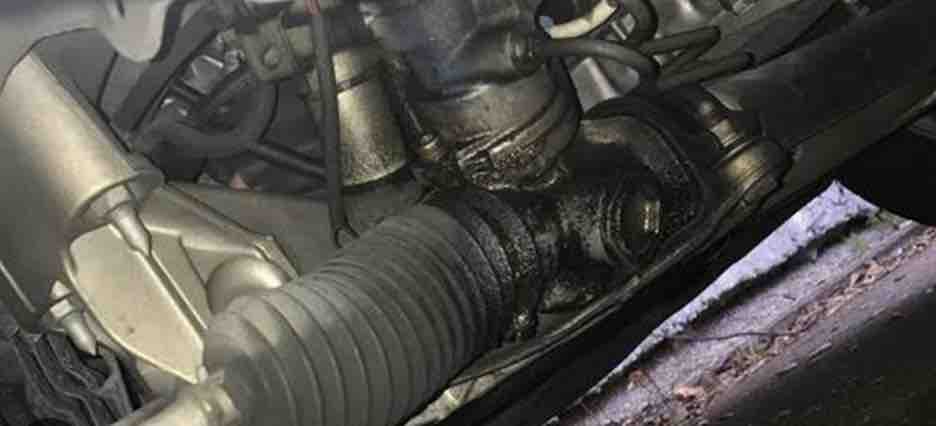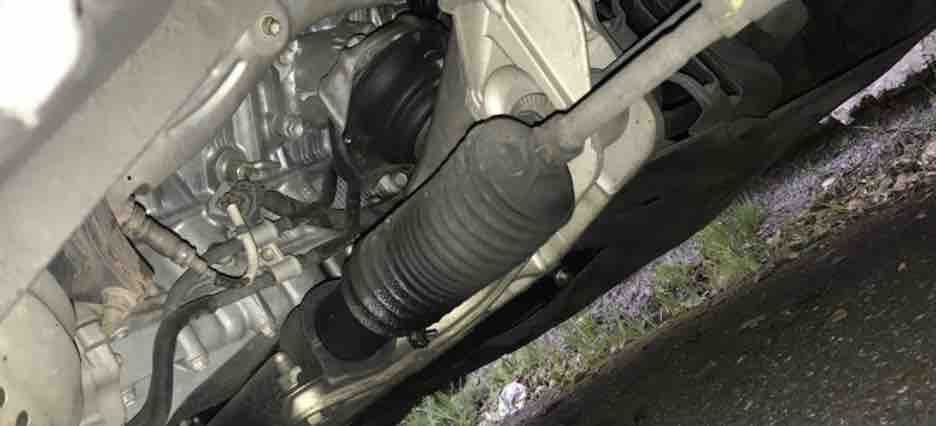So, if you are experiencing any unusual behavior when steering or turning your car, it might be that you are dealing with a bad rack and pinion. In this article, we will dive deep into understanding what your vehicle’s steering system rack and pinion are, and what they do.
So, we will start by explaining ‘What is Rack and Pinion Steering?’ to give you a clear idea of its role and importance. After that, we’re going to discuss ‘6 Symptoms of a Bad Rack and Pinion,’ so you can easily identify if your car might be suffering from this issue.
Then, we’ll delve into the ‘Common Causes of Rack and Pinion Failure,’ which will further enhance your understanding of this critical system. Of course, we want your vehicle to run smoothly for as long as possible, so we’ve also included ‘Preventive Maintenance Tips’ that can help keep your rack and pinion in optimal shape.
And as always, don’t forget to like, subscribe, and hit that notification bell so you never miss an informative post ike this one. Let’s get started!”
Causes and Symptoms of a Bad Rack and Pinion and Replacement Cost.
What is Rack and Pinion Steering?
Rack and pinion steering (RnP steering) is an alternative form of the vehicle steering mechanism which uses gearsets to convert rotational wheel motion into linear wheel rotation for turning vehicles.
Here’s how it works:
A system consisting of a circular gear (the pinion) and an oval bar with flat teeth (the rack). When turning the steering wheel, spins the pinion gear which transfers its rotation onto either the left or right sides of the rack to move accordingly.
Tie rods connected to the end of a rack connect to steering arms on wheels, enabling them to turn.
Rack and pinion steering provides more accurate steering with easier operation and enhanced feedback from the road surface. In modern vehicles, rack and pinion steering is typically powered by hydraulic or electrical systems to make steering even simpler for drivers.
6 symptoms of a bad rack and pinion
Sign 1: Power Steering Fluid Leakage.
One of the telltale signs of a bad rack and pinion is leaking power steering fluid; usually, clear, pink, or reddish (sometimes brown depending on dirtiness) power steering fluid will start seeping out when there is a hole somewhere in its system, and begin seeping under your car around its steering rack area.
Leaks often occur around dust boots, steering columns, or power steering lines so if any occur there it might warrant replacing either part (but possibly just fixing its associated hose may suffice instead!).
If this leak appears within these locations it might also need replacing; otherwise, just repair its associated line instead!
Sign 2: Driving Instability.
Your car’s rack and pinion must function at peak levels to maintain stability during steering.
If it drifts to either side or pulls to one while attempting to drive straight, this could be down to its rack and pinion, or its tie rod attached thereto, which are possibly at fault.
While such actions might appear small in comparison with what would normally occur under normal circumstances, these may seriously undermine handling, safety, and handling performance if left uncorrected.
Sign 3: Difficulty Turning the Steering Wheel.
One telltale sign of a failing rack and pinion assembly is difficulty with turning the steering wheel, or unusual stiffness when making turns. At first, you might assume this was caused by your power steering pump, but if this stiffness continues even after replacing the pump then chances are good it’s your rack and pinion assembly that has overheated and failed and prevents you from steering effectively.
Sign 4: Excessive Steering Wheel Play.
An excessive play or wiggle in your steering wheel when your wheels aren’t moving can result in vibrations while driving – an indication of worn-out rack and pinion system components.
As they wear down over time, worn racks won’t hold onto their columns securely enough, leading to loose steering wheel play that makes driving less comfortable while potentially increasing response times in emergency situations.
This poses both comfort and safety risks to motorists alike.
Sign 5: Burning Smell.
If you notice a burning smell emanating from the rack and pinion area, this could indicate that they have overheated. This usually results from low power steering fluid levels; and is an early telltale sign that something has gone amiss with them.
Sign 6: Strange Noises.
Hearing strange grinding, clunking or knocking noises emanating from the area surrounding your rack and pinion system indicates something may not be in order. These may indicate internal parts have failed and need replacing quickly in order to preserve the reliability and functionality of this vital piece of machinery.

So what are the common Causes of Rack and Pinion Failure:
Some of the most common causes of Rack and Pinion Failure are:
1. Normal Wear and Tear:
This is by far the most prevalent cause of rack and pinion failure since its components wear down over time when used repeatedly when driving on rough roads or harsh conditions. This issue becomes especially acute if driving frequently occurs over rough surfaces such as gravel roads.
2. Lack of Lubrication:
A rack and pinion system needs to be adequately lubricated in order to perform effectively, otherwise friction, heat, wear, and failure could occur more rapidly than necessary. Routine checks on power steering fluid could prevent this scenario.
3. Contaminated Fluid:
Contaminated power steering fluid can also contribute to rack and pinion failure, as a contaminated liquid can harbor dirt, dust, and other particles which damage seals, components of steering systems as well as seal sealants in their path to damaging components in your steering system. Therefore, it’s imperative that regular power steering fluid changes occur for the best performance.
4. Faulty or Damaged Seals:
Rack and pinion systems rely heavily on seals to keep fluid inside while also keeping out dirt and debris, so any damage or wear to these seals could lead to leakage, contamination, and ultimately failure of the rack and pinion system.
5. Misalignment:
Whilst misaligning wheels does not directly put stress onto a rack and pinion system, improper wheel alignment could put extra stress onto this component and ultimately cause its premature failure.
6. Car Accidents and Collisions:
Accidents or collisions may also damage rack and pinion systems directly, even minor ones causing components to bend or break, ultimately compromising their effectiveness and ultimately leading to their system failing altogether.
Now let’s look at the Costs Associated to Replacing Rack and Pinion.
On average replacing a rack and pinion typically costs anywhere between $1,200 to over $2,000 for more accurate estimation consider getting quotes from multiple service providers near your area. Also keep in mind that delaying repairs could result in even higher repair bills later, including damage to tires or suspension systems that require expensive replacement work.
1. Buys Parts Cost Estimate:
Rack and Pinion Assemblies can range between 200$ to 500$; prices can depend upon the make and model of the vehicle. However, premium vehicles could incur costs exceeding $1,000 for assembly costs alone.
2. Labor Costs:
Replacement of a rack and pinion can range between 200$ to 500$ depending upon your geographical location and garage/mechanic. As this process can take multiple hours to complete, hence its associated expenses.
3. Alignment cost:
Once the rack and pinion have been installed on your vehicle, an alignment service should be undertaken to make sure all wheels are set appropriately and can cost between 75$ to 200$ per session.
4. Power Steering Fluid:
Rack and pinion replacement require new power steering fluid as well. A gallon typically costs 5$ to 15$ depending on its brand and availability in your region.
5. Miscellaneous Costs:
Other expenses that must be added on, like replacing tie rod ends and power steering hoses may incur extra expenses as part of this repair job.
Preventive Maintenance Tips Rack and Pinion
1. Regularly Inspect Your Power Steering Fluid:
Power steering fluid is key for optimal operation of the rack and pinion system, so regular checks of its level and refills as necessary are imperative for smooth functioning. Keep an eye out for discoloration or debris which could indicate problems within its reservoirs.
2. Regular Replacement of Power Steering Fluid:
It is imperative that the Power Steering fluid be renewed on time in order to remain effective and protect power steering components from breakdown.
Many vehicle manufacturers recommend replacing power steering fluid at specific intervals to maintain system functionality and prolong component lifespan. By adhering to such recommendations, drivers can ensure optimal functioning and prolong component longevity.
3. Engage In Frequent Vehicle Inspection:
Regular vehicle inspection can help detect issues early. Hire an independent inspection service to review your steering and suspension system regularly if you notice changes to its performance, particularly if there are changes to how well the car steers.
4. Keep Your Car Wheels Aligned:
Improper alignment can put undue strain on your steering components, including rack and pinion gears, leading to unnecessary wear-and-tear damage and stress on rack and pinion parts. Regular check-ups and adjustments of this alignment issue are vitally important.
5. Avoid Hard Steering:
Where possible, avoid hard steering maneuvers such as full-lock turns; this puts undue strain on your rack and pinion, leading to wear and tear over time.
6. Schedule Lubrication of the System:
To maintain optimal system operation and efficiency, regular lubrication is crucial.
Make sure that the steering system of your vehicle is regularly lubricated as recommended in its owner’s manual in order to reduce friction and wear in its operation. Regular lubrication helps minimize these potential problems with friction-reducing oil being distributed around its system and through its components.
7. Address Issues Quickly:
If you experience issues like abnormal noises, harder steering, or fluid leaks, it is crucial that they are addressed as quickly as possible; early diagnosis and repair could prevent more extensive damage that incurs more expensive repair bills later.













